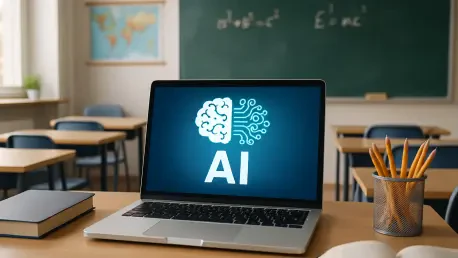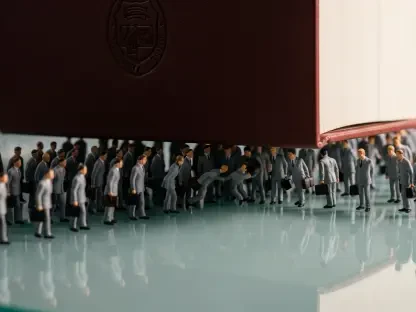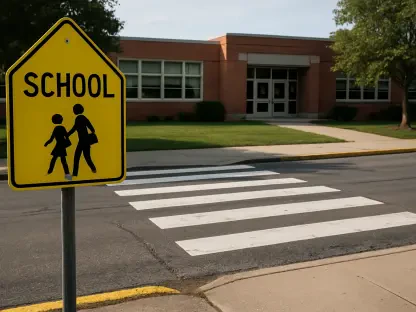In an era where artificial intelligence is reshaping every facet of society, its integration into education presents both unprecedented opportunities and profound challenges for teachers and students alike, raising critical questions about the cost to human elements. Classrooms are becoming testing grounds for cutting-edge tools that promise to revolutionize learning, yet a vital concern looms: at what expense to the personal connections that define education? Timothy Cook, a third-grade teacher and researcher, offers a compelling perspective through his personal classroom experiences and critique of major initiatives like the American Federation of Teachers (AFT) partnership with tech giants such as Microsoft and OpenAI. His insights highlight a pressing need to preserve curiosity, empathy, and genuine inquiry amidst the rush toward technological efficiency. This article delves into the delicate balance between embracing AI’s potential and safeguarding the irreplaceable human connections that fuel authentic learning, urging educators to reflect on what truly matters in shaping young minds.
The Dual Edge of Technology in Learning Environments
As AI tools infiltrate educational settings, their ability to alleviate administrative burdens cannot be overlooked. Tasks like drafting newsletters, organizing student data, and managing schedules can be streamlined with remarkable speed, allowing educators more time to engage directly with their students. This efficiency is a boon for teachers often stretched thin by paperwork and logistical demands. The promise of AI lies in its capacity to handle repetitive chores, theoretically freeing up space for deeper, more meaningful interactions in the classroom. However, this potential comes with a caveat: technology must not overstep into realms where human judgment and creativity are paramount. The allure of quick fixes can obscure the nuanced role of a teacher as a mentor who inspires and adapts to individual needs.
A significant concern arises with initiatives like the AFT’s $23 million collaboration with tech leaders to train educators in using AI for core instructional tasks. While the intention is to promote ethical and safe usage, there’s a risk of diluting the teacher’s unique voice in lesson planning and decision-making. Relying on algorithms as a “thought partner” might prioritize convenience over the personalized guidance students crave, especially during pivotal learning moments. Such dependence could transform education into a mechanical process, stripping away the organic, sometimes chaotic nature of discovery that defines true growth. The challenge is ensuring that AI remains a supportive tool rather than a substitute for the human insight and passion that drive effective teaching.
Systemic Challenges Magnified by Digital Tools
Education systems worldwide often place disproportionate emphasis on measurable outcomes, such as test scores and completed assignments, over the intricate process of learning itself. This focus on end products creates an environment where students are incentivized to seek shortcuts, whether through modern AI tools like ChatGPT or traditional means like summarized study guides. The issue isn’t solely the technology; it’s a longstanding flaw in how success is defined within academic structures. When the journey of understanding is undervalued, the temptation to bypass it grows, undermining the development of critical thinking and intrinsic motivation among learners.
AI exacerbates this problem by making shortcuts more accessible and harder to detect, complicating efforts to assess genuine comprehension. The ease of generating polished work through algorithms can mask gaps in a student’s understanding, leaving educators struggling to differentiate between authentic effort and tech-assisted output. This trend risks further disconnecting students from the value of grappling with challenges and embracing confusion as a natural part of learning. Addressing this requires a cultural shift in education, one that celebrates the messy, iterative nature of intellectual growth over the allure of polished results. Only by reframing priorities can the deeper issues amplified by technology be tackled effectively.
Redefining Teacher Training for Human-Centric Classrooms
Professional development for educators must pivot away from an over-reliance on technological solutions and toward fostering environments rich in human connection. Training programs should emphasize the creation of spaces where confusion is not a failure but a vital step toward insight, encouraging students to ask questions driven by personal wonder rather than external expectations. This approach champions the relational aspects of teaching—empathy, inspiration, and the ability to ignite a student’s natural curiosity—that no machine can replicate. By focusing on these elements, educators can cultivate classrooms where learning is a deeply personal and transformative experience.
Moreover, such training should empower teachers to maintain their cognitive independence from AI, using it as a tool rather than a crutch. Programs need to highlight strategies for integrating technology in ways that complement human judgment, ensuring that educators retain control over the creative and ethical dimensions of their craft. This balance is essential to prevent the erosion of a teacher’s role as a facilitator of critical thinking and emotional growth. When professional development prioritizes human-centric values, it equips educators to navigate the digital landscape without losing sight of what makes education profoundly impactful—the connection between teacher and student.
Envisioning a Harmonious Path Forward
Looking ahead, the integration of AI in education demands a thoughtful approach where technology serves under human guidance, not as a replacement for human insight. Combining the efficiency of digital tools with the ethical judgment and creativity of educators can prepare students for a tech-saturated world while keeping human wisdom at the forefront. This harmony is crucial to maintaining education as a space for exploration and authentic connection, rather than a mere conveyor belt for predetermined outcomes. The focus must remain on nurturing environments where students feel safe to experiment and grow at their own pace.
Reflecting on past efforts, it’s evident that initiatives to embed AI in classrooms often stumbled when they prioritized speed over substance. Moving forward, stakeholders have to recalibrate, ensuring that every step taken with technology amplifies rather than diminishes the teacher’s influence. Future strategies should build on those lessons, investing in frameworks that support educators in wielding AI as a partner, not a director. By committing to this balanced vision, the educational community can safeguard the essence of learning while harnessing innovation for the benefit of all.









